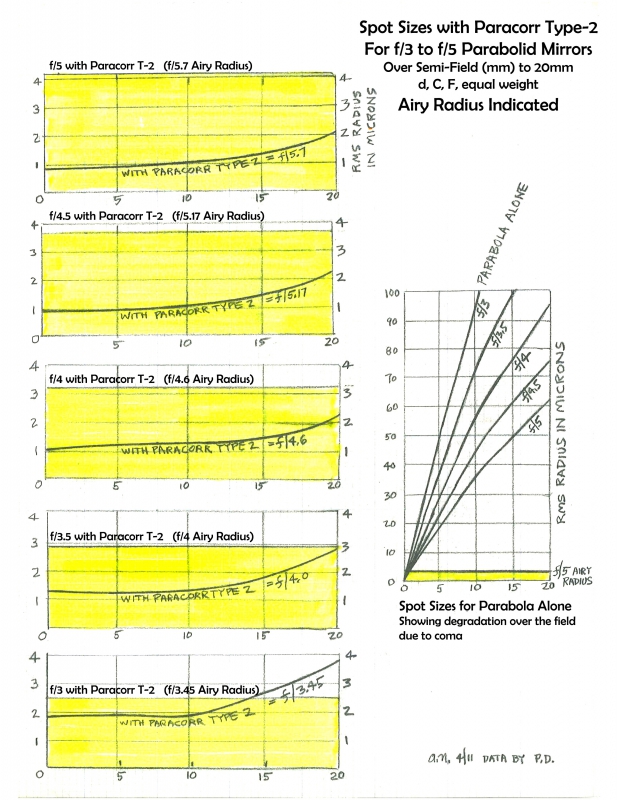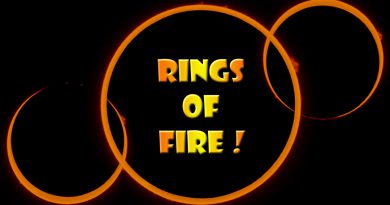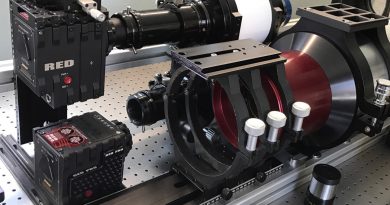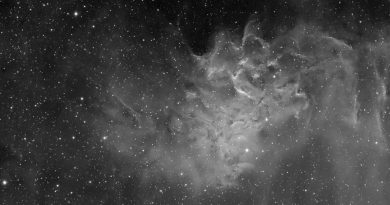Paracorr Type-2: Image of the Day!

To rescue fast Dobsonian telescopes from the curse of coma, Tele Vue’s Al Nagler designed the original Paracorr (PARAbola CORRector) in 1989. By 2009 mirrors had gotten decidedly faster than they were in the late ’80s and some of our eyepieces had significantly different field stop locations (focus positions). We decided to re-optimize the Paracorr with a new Type-2 design. This new Paracorr Type-2, this time designed by Paul Dellechiaie, when inserted into an f/3 Dobsonian makes the stars appear as coma-free as a native f/12 mirror!
A popular product, Paracorr Type-2 is available in three models: 2″ Photo/Visual for drop-in use in 2″ focusers, the Starlight Integrated Paracorr System (SIPS) which is built into a Starlight Instruments Feather Touch focuser, and a 3″ photo model for integration into fast Newtonian astrographs using sensors over 30mm in diagonal. Performance improvement over the original Paracorr is most noticeable on all Newtonian/Dobsonian telescopes of f/4.5 and faster. See our blog post, Paracorr-Newtonian for Visual and Imaging to f/3! Part 2, and Paracorr Type-2 page on our website (mobile site).
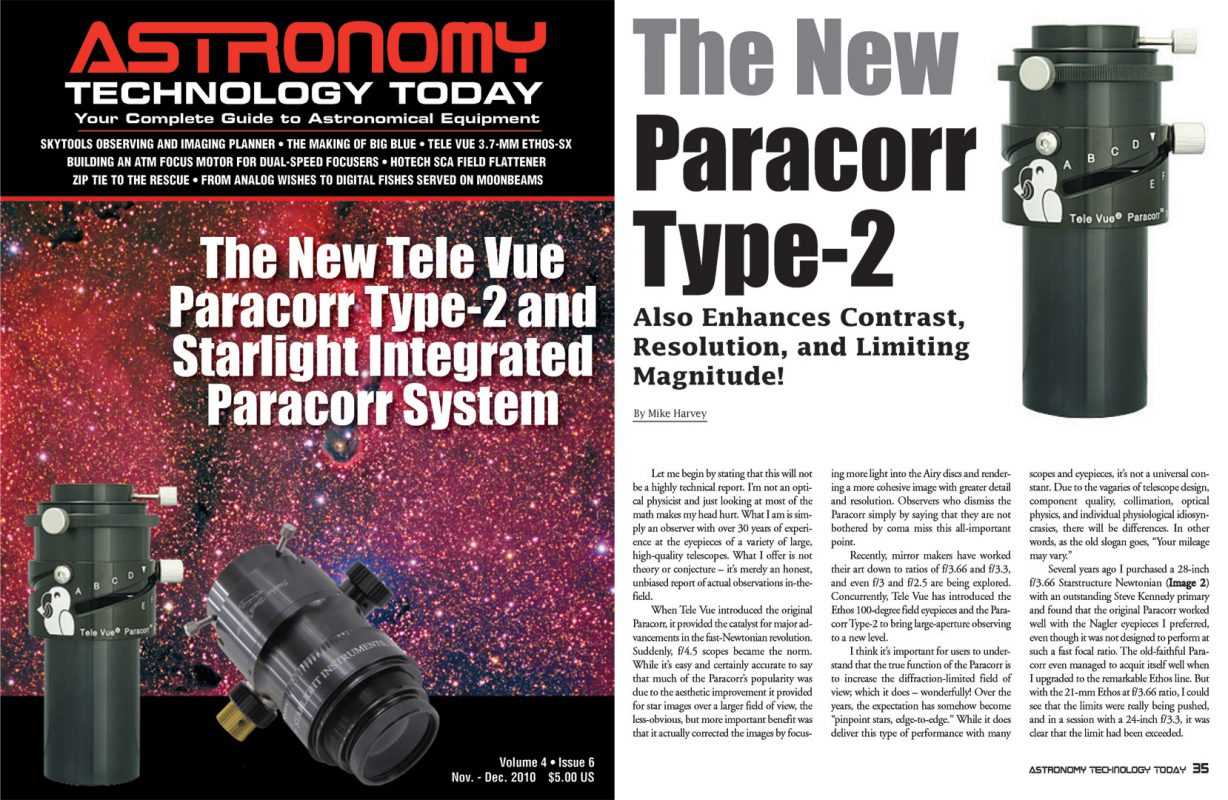
Here’s a quote from an imaging review of our 3″ BIG Paracorr Type-2 incorporated into a 12″ f/5 Dob — the emphasis is ours.
During my years of testing astronomy equipment, I’ve worked with some of the world’s finest telescopes designed for astrophotography. I’ve used telescopes made by Officina Stellare, PlaneWave, Takahashi, and Tele Vue, as well as top-of-the-line equipment from Celestron, Meade, Star-Watcher, Stellarvue, and others. The astrophotos with this review, however, weren’t made with any of them. Rather, they were taken with a 12-inch Meade LightBridge Dobsonian that I bought used for $500. All I did was add Tele Vue’s new Big Paracorr Type-2 coma corrector to the scope and, Voila, I had imaging performance that was on par with the best astrographs I’ve tested.
di Cicco, Dennis. “Tele Vue’s Big Paracorr Type-2”. Sky & Telescope (April 2015). pp72-76.
With its coma-freeing reputation, Tele Vue’s Paracorr coma corrector has been employed in the creation of some of the best Newtonian images posted to the Internet. Following are some AstroBin Image of the Day winners from the past year created with a Paracorr-corrected Newtonian.
Hangyeol Kang
Below we see a pink “flower” cocooned in a foggy mist in front of a star-filled background punctuated with a red sash. What a first glance seems to be a piece of modern art is actually an image of the Cocoon nebula (IC 5146). This image, by astro imager Hangyeol Kang, was the AstroBin Image of the Day for 20 October 2022. The imaging filters used were Red, Green, Blue, Luminance, and Hydrogen-α (HaLRGB). Hα was used to highlight hydrogen emissions in the background.
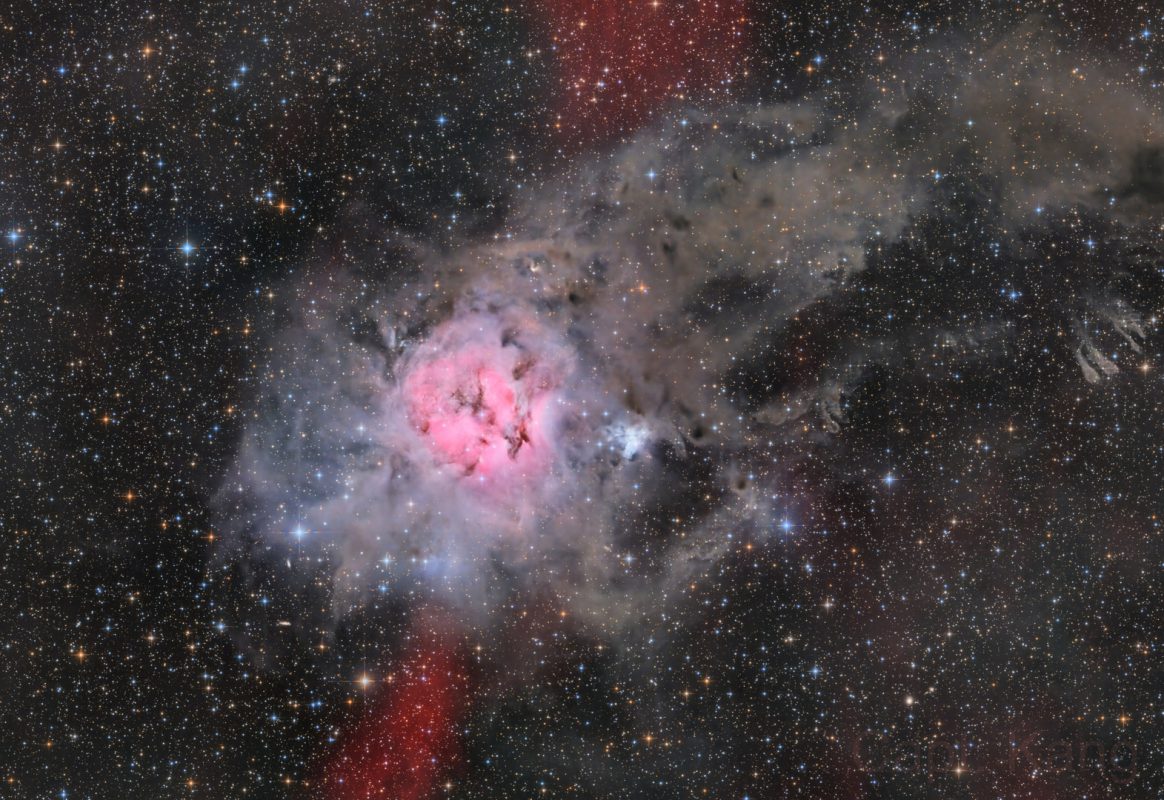
The Cocoon (IC 5146) is a compact star-forming region composed of an emission and reflection nebula with a cluster of new stars. The “flower” is hydrogen gas ionized by ultraviolet light from new stars in this stellar nursery. Powerful winds from these new stars carve out bubbles in the nebula that reveal the space beyond while dark lanes crossing through the nebula are cold gas and dust that will give birth to new stars. The surrounding bluish color is light reflecting off dust formed by supernovae explosions.
I really want to tell you that I have used Paracorr Type-2 for more than 2 years and am perfectly satisfied with it so far.
Hangyeol Kang
Hangyeol is a member of Team Dwarf Stars astrophotography club.
Robert Shepherd
Galaxies abound with dust and gas on this black velvet “painting” that was AstroBin Image of the day for 12 October 2022 and created by Robert Shepherd by imaging the night sky in Pegasus. The targets include the spiral galaxy NGC 7331, Stephan’s Quintet galaxy grouping, and an Integrated Flux Nebula using Luminance, Red, Green, and Blue (LRGB) filters.
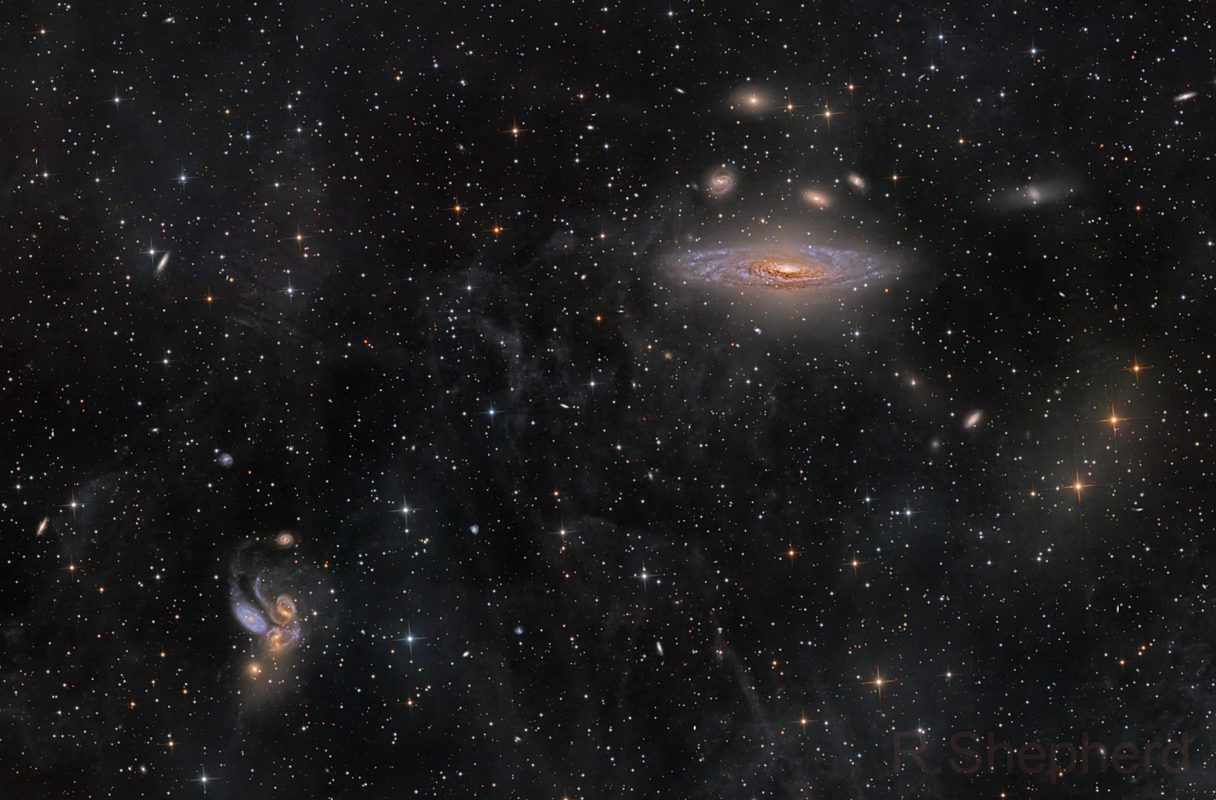
Spiral galaxy NGC 7331 is the large galaxy toward the upper right of the center. The unrelated distant galaxies above it are referred to as the NGC 7331 Group.
Stephan’s Quintet galaxy group is a tight-looking group of five galaxies at the lower left ― count the yellow nuclei in the enlargement if at first glance you see only four. Four of the galaxies are destined to merge together in the future while the brightest member is actually a foreground galaxy far removed from the others. Stephans’s Quintet was selected as one of the first targets for the James Webb Space Telescope’s “official beginning of Webb’s general science operations”.
Integrated Flux Nebula (IFN) is a recent term coined to describe the dust and gas that is far from any star in our Milky Way galaxy. These nebulae glow from the collective light of the entire galaxy. They are prominent at high galactic latitudes toward the north and south galactic poles.
The Paracorr is truly a fine piece of gear.
Robert Shepherd
Jacob Heppell
The AstroBin Image of the Day winner for 05 April 2022 was created by Jacob Heppell. He imaged the Gum 10 emission nebula with a “Hubble Palette” filter set and a Red, Green, and Blue (RGB) filter set. The nebula was processed in the Hubble Palette and the stars in the RGB set. The nebula and star images were combined for the final result.
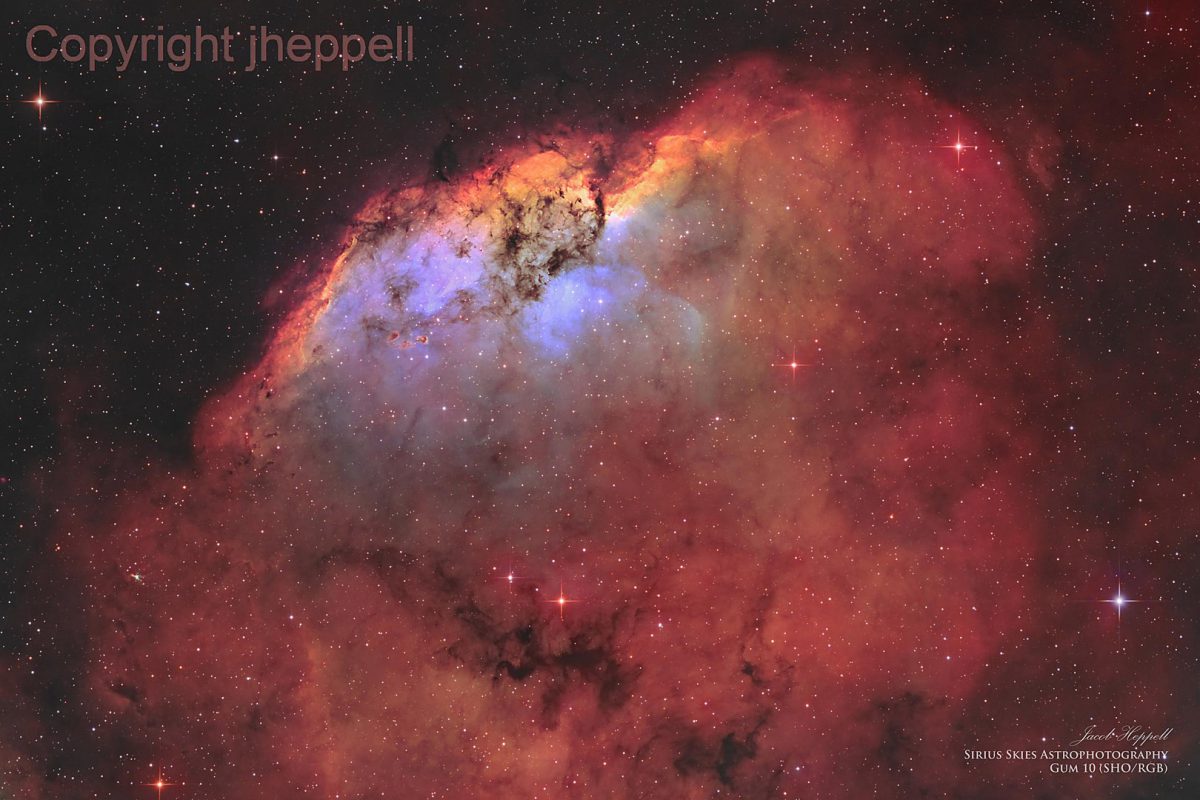
The Gum 10 emission nebula is rarely imaged by astrophotographers so it is a treat to see it celebrated as an AstroBin Image of the Day.
Phil Brewer
This eye-grabbing depiction of Wolf-Rayet 134 (in Cygnus) demonstrates the ability of narrowband filters to convey a startling dimensional quality to distant objects. In the case below, the Hα and OIII filters tease out a fluorescent scene of blue “cotton candy” against a swirling sea of red. This image was unique enough to earn the AstroBin Image of the day for 29 June 2022.

Wolf-Rayet 134 (in Cygnus) is the bright center star in the blue “puff”. Wolf-Rayet stars are interesting as they are over 20 times the mass of our sun and spew material into space at the rate of several Earth masses a year! After a few million years they explode as supernovae. In this case, the outflowing material from the star is interacting with the (red) interstellar clouds of gas and dust to create the bubble around the star.
I was previously using a competitor’s product. While imaging I has serious problems with strange flat field artifacts in my images. I tried everything I could think of to fix it and literally spent years struggling with it. I finally broke down and bought the Paracorr and the problem immediately went away. It was apparently bad internal reflections or something from the competitor’s coma corrector. So you have at least one happy customer.
Phil Brewer
Did you observe, sketch, or image with Tele Vue gear? We’ll like your social media post on that if you tag it #televue and the gear used. Example:
#televue #paracorr #ethos #m13
Do you want your Tele Vue images re-posted on Tele Vue Optics’ Social Media accounts? Use this hashtag for consideration:
More Info
- Paracorr-Newtonian for Visual and Imaging to f/3! Part 1 blog post describes how minor aberrations in early Newtonians became a problem as scopes became bigger and faster. We learn how Tele Vue’s Paracorr enlarged the imaging/viewing “sweet spot” of modern scopes to cover the entire field. Then the Paracorr – Newtonian combination is weighted against more “exotic” telescope designs for imaging.
- Paracorr-Newtonian for Visual and Imaging to f/3! Part 2 blog post continues from Part 1 with an explanation of which of the three current Paracorr models to use for your application.
- Tele Vue Paracorr Type-2 on our website (mobile site).
- Using 3″ BIG Paracorr Type-2 with “Imaging System” Accessories (mobile site)
- Starlight Instruments SIPS page on Tele Vue.com (mobile site).
- Tele Vue Eyepiece Calculator can take into account Paracorr usage (mobile site).



